Have you ever used pomegranate molasses? Or grape molasses, or carob? Or mulberry? In North America, when we hear “molasses,” most of us think of blackstrap. But molasses go far beyond that in Turkey, where they are collectively known as pekmez.
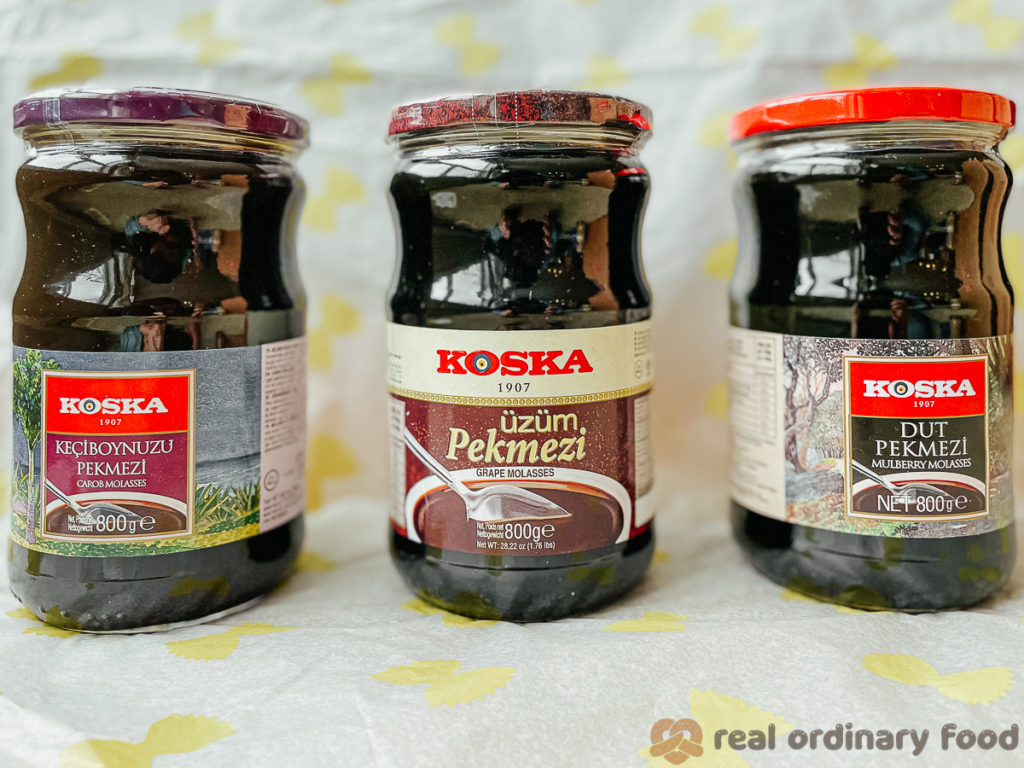
What is Pekmez?
Turkish-style fruit molasses are thick, intensely-flavoured syrups made from simmering down crushed fruits. Think a kind of tart, smoky, concentrated fruit juice. Grape molasses are by far the most popular, but pekmez made from apple, apricot, carob, date, fig, mulberry, and pomegranate are also common. Homemade pekmez is often made with whatever fruit is in abundance to preserve it for a very long time. Just about any fruit grown in Turkey has been turned into pekmez at some point!
Pekmez can be sweet or sour, liquid or solid. Sweet liquid pekmez is the most mainstream variety and is what the remainder of this post will be focusing on.
Origins
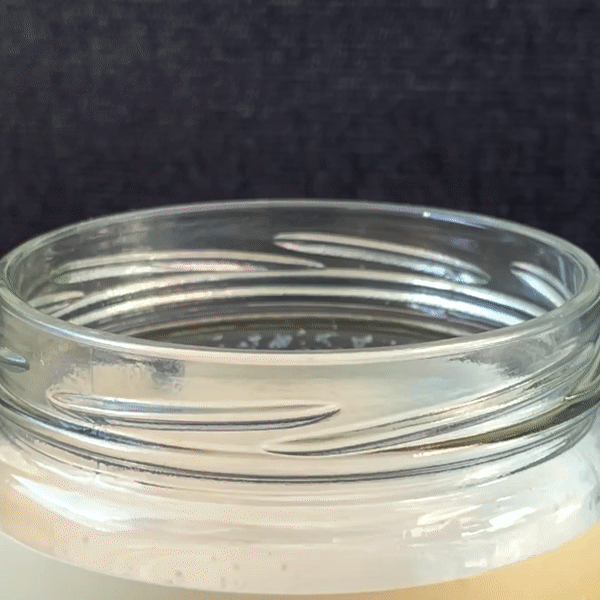
The making of pekmez is a long-standing rural Turkish culinary tradition. The first mention of the word in the Turkish language dates back to the 11th century. However, grape molasses in particular were in use as early Ancient Greece, where they were known as hépsēma. Later, the Ancient Romans named their version of this product defrutum. (See: a recipe from Ancient Pompeii that uses grape molasses!) I couldn’t find any definitive statements about this, but it’s possible the Romans introduced the habit of defrutum consumption to Turkey, which was at one point part of the Roman Empire.
Even in the present day, these thick fruit syrups aren’t exclusive to Turkish cuisine. Products similar to pekmez are found in many nations, including Greece (petimezi), Italy (vincotto), Iran (shireh), and Arab countries (dibis). In the Balkans, where the Ottomans reigned for centuries, pekmez translates to “jam” and is consumed in a similar way. However, Turkey sees some of the most widespread use, with 18% of its local grape harvests going towards üzüm pekmez production alone.
Health Benefits
Known as the “healing syrup of Anatolia,” pekmez is a popular health food in Turkey. It has similar health purposes in other countries.
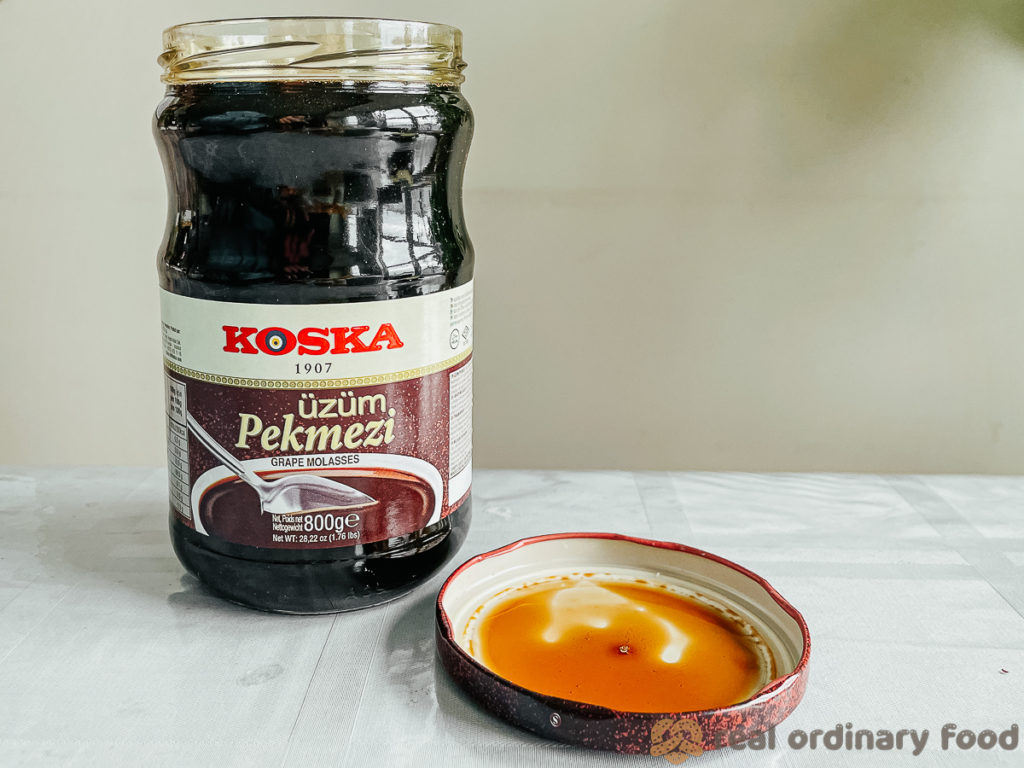
If it seems weird that a syrup could be considered healthy, it’s true that pekmez can contain up to 80% sugar. This gives it an average energy value of 280 kcal/100 g. But while it may not exactly be useful as a low-cal sweetener, it is mainly seen as a healthy source of fast calories, useful for feeding babies, keeping warm in the winter, and fueling up for sports. Kinda like an all-natural energy drink.
Beyond that, Turkish home remedies recommend pekmez for just about any ailment, from curing colds and flus, to treating anemia, to restoring strength in pregnant women, to… uh… acting as an aphrodisiac.
But if you’re not swayed by folk tradition, be assured there is scientific evidence that pekmez contains nutrients! It’s rich in dietary minerals such as calcium, potassium, iron, and manganese, and antioxidants such as polyphenols and flavanoids. It has its merits nutritionally, for sure.
How to Use
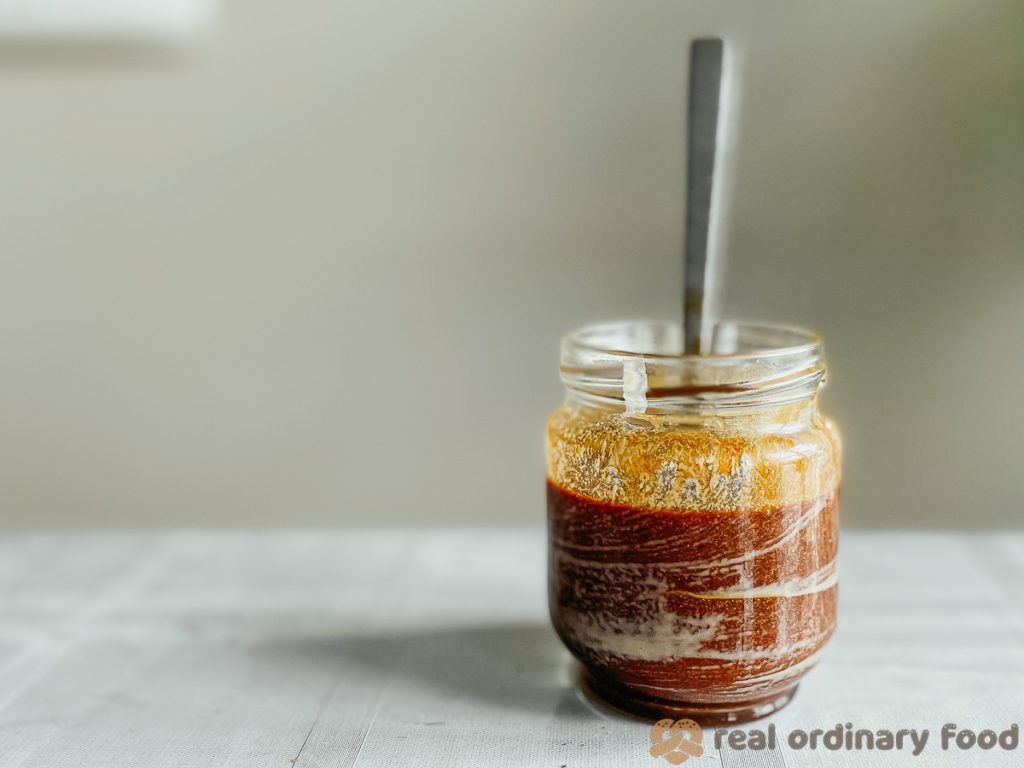
It’s easiest to think of pekmez as jam or marmalade because they are used in similar applications. Turks eat it mainly for breakfast: on bread, over yogurt, in porridge. It is a natural sugar product, making it a good refined sugar substitute for baking sweet treats. (I’ve used it to sweeten cookies, and I’m planning to try it in place of honey for this granola bar recipe.)
You can even find pekmez in Turkish delights (pekmez lokum), or the related Greek delights (moustoloukouma), and halva (pekmez helvasi). But one of the most popular ways to eat this stuff is to mix it with tahini (a type of sesame paste), creating a rich, creamy, sweet paste. There have even been studies done on the optimal ratios of tahini to pekmez. Yes, it’s quite a topic of scientific interest!
I am currently trying out different ratios used in tahini pekmez. Expect a recipe and a report on the taste test results next week as Part 3 of the Pekmez Appreciation series.
But one of my most frequent uses for it so far is mixing it into soy milk. A bit healthier than sweetening it with sugar as I’ve done in the past!
Making Pekmez at Home
Although the process of making molasses from fresh fruit is simple enough—crush, strain, stir and boil until thickened (the order changes depending on what fruit is used)—it is time-consuming. It can take several hours just to reduce the fruit into a syrup. More challengingly, to make sweet pekmez you have to add a special ingredient: either pekmez earth or wood ash. The active ingredient here is calcium carbonate (CaCO3), which reduces the acidity of the fruit juice. Without it, the resulting pekmez will be very astringent and not much good for any sweet applications.
In rural Turkey, most pekmez is still made at home. I found two very interesting videos showing the making of homemade molasses. The first video shows the typical process of making a large batch of pekmez in the Turkish countryside. The second video goes through a similar procedure, but on a smaller scale which can be achieved a home kitchen. Note that the recipe in the second video uses an egg white to help separate the foam after boiling. For a vegan version, you would have to filter it again after boiling to strain out the foamy residues.
Although I love to cook everything from scratch, I don’t think it’s worth it to make your own pekmez. A large bottle can be found for less than $15 and will last forever, and the quality is more consistent. If I find calcium carbonate one day, maybe then I will give it a try just for the sake of comparing homemade to storebought.
Storebought Pekmez
Here in North America, it can be tough finding pekmez even in Middle Eastern specialty shops and world food stores. I ordered mine online from Turkish Bazaar, a Canadian online business that specializes in Turkish products. I was really happy with their prices and the convenience of ordering online, so if you don’t have a local Turkish grocer near you I’d give them a shot.
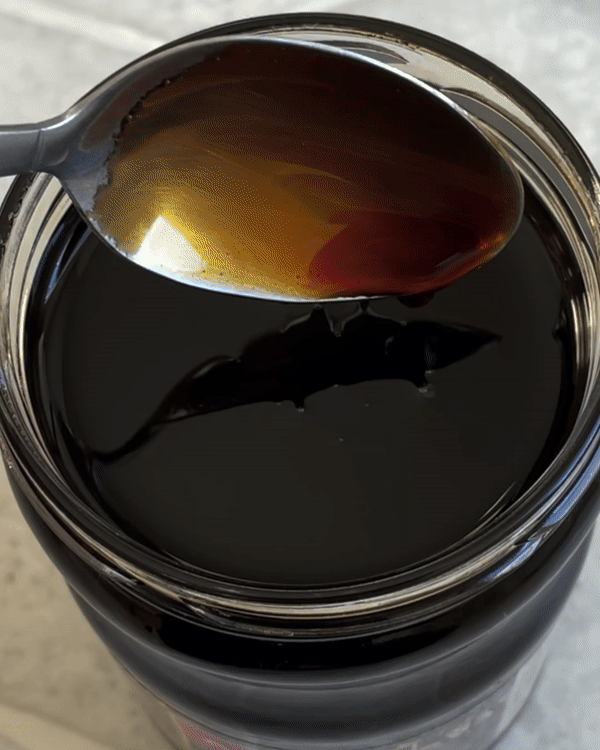
All three bottles of fruit molasses I purchased were from the brand Koska. This is one of the most popular pekmez producers in Turkey. Try to find a bottle that contains 100% fruit, with as few additional ingredients as possible. Unfortunately, none of the Koska containers had ingredient labels on them. But according to the Koska website, none of these molasses contain any added sweeteners which is good enough for me!
Taste Test
These fruit molasses were runnier, less viscous, than I expected. As you can see from the gif, it’s thinner than other syrups like maple syrup or agave syrup. The exception was the carob molasses which was much thicker, and closer in consistency to honey or a pancake syrup.
Since they are all essentially boiled, reduced fruit juice, and they all look exactly the same, I expected these pekmez to share a similar basic flavour profile, but I was so wrong. Each one had a very distinctive smell and taste that you can’t mistake for another. But what I can say is that each one, on its own, is not too pleasant to eat straight. It’s like drinking maple syrup, it just feels wrong. (Though I’m sure there are some of you weirdos out there who love guzzling maple syrup.) Not only are they extremely sweet, but they also have a rather intense, almost smoky flavour on top of the sweeteness. My dad commented that the opened bottle of carob molasses smelled like herbal cough syrup!
Carob Molasses (Keçiboynuz Pekmezi)
Brand: Koska
Price: $9.99 for 800 g
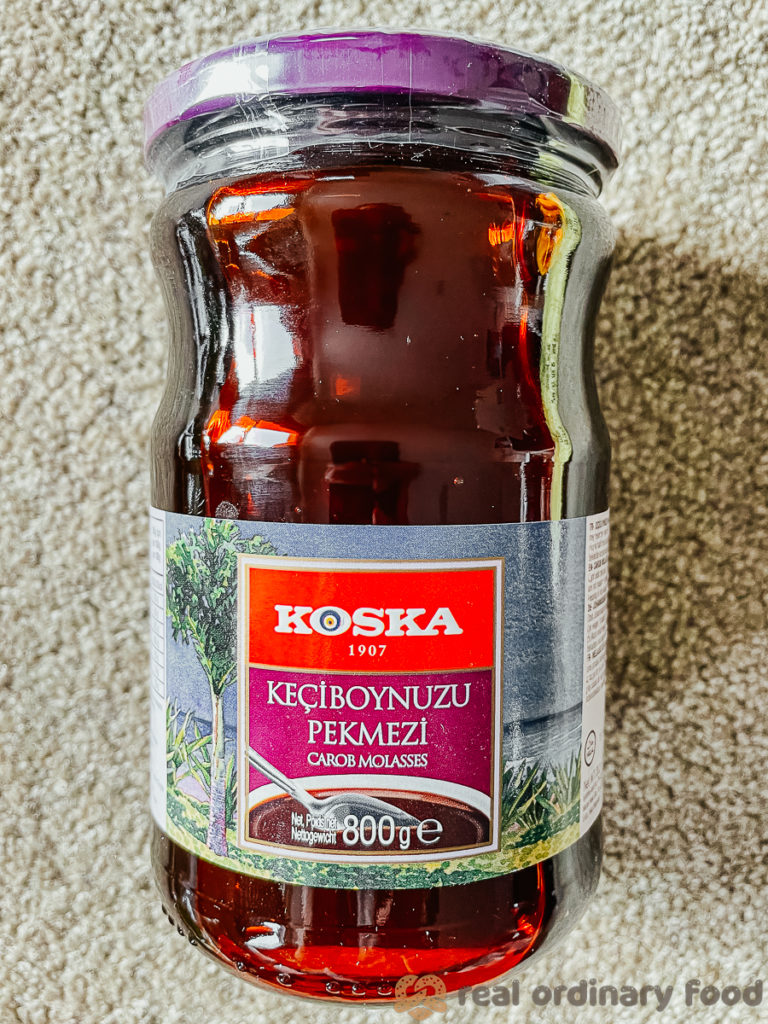

Let’s start off our pekmez taste test with a bang, and I mean that literally, because carob molasses have a reputation as an aphrodisiac.
Here in the West, though, carob is mostly known for being a health-conscious substitute for chocolate chips. (And also this clip from Brooklyn Nine-Nine.) Kevin and I both like carob nibs, though, so I was pretty excited to try carob in a syrup form.
Unfortunately, this one turned out to be my least favourite of the three molasses. It smelled very very strong, and as I said earlier, my dad likened it to cough syrup. And the taste wasn’t all that far from cough syrup, either. It has an unpleasant, almost smoky taste. If you fed this to me with no context, there’s no way I’d ever guess it was made from carob. Interestingly, it was also much much thicker than the other two pekmez varieties.
It’s too strong even for stirring into yogurt or baking into cookies. However, I found it to be a good substitute for blackstrap molasses, at least in small amounts, such as in this vegan Cumberland sausage. (I haven’t tested it in recipes that call for large amounts of blackstrap; I’ll update this post when I do.)
Grape Molasses (Üzüm Pekmezi)
Brand: Koska
Price: $13.99 for 800 g
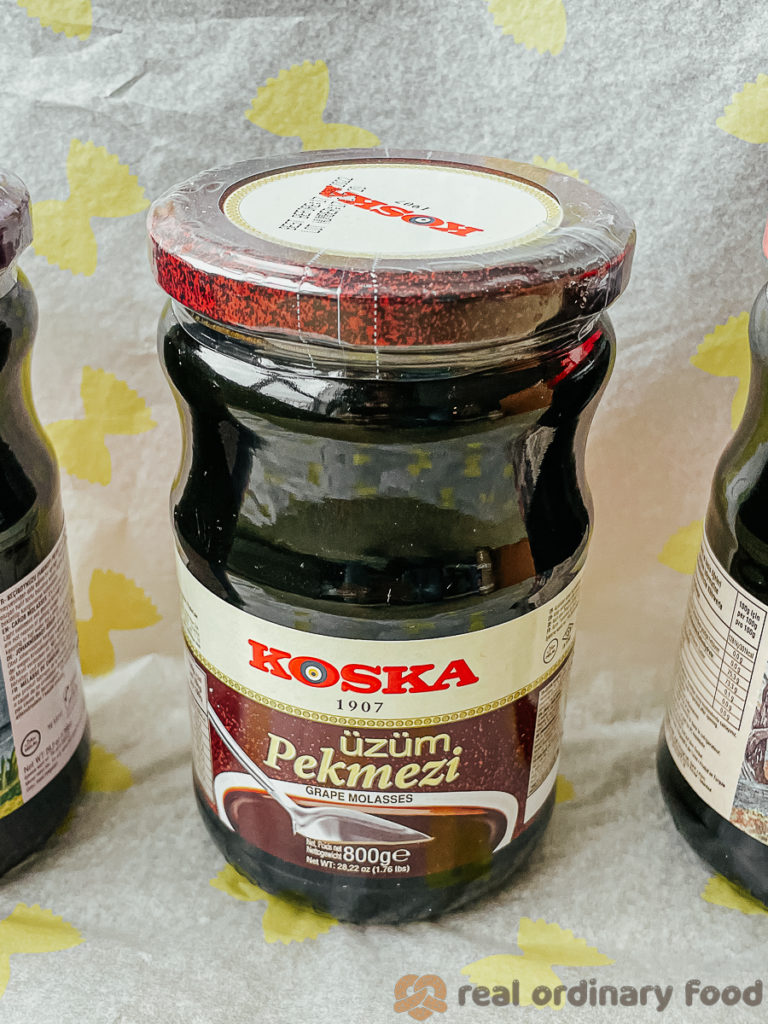
Grape molasses are the most popular form of pekmez in Turkey. So popular that the word pekmez itself is often used to refer to grape molasses specifically. And in fact, grape pekmez are well-loved outside of Turkey too.
In Greece, this stuff is known as “petimezi” and was used as a sugar substitute during war shortages. (Just like how North Americans used raisins in a similar way.) There, in addition to being a breakfast spread, it is also recommended on fruits, cheeses, ice cream, yogurt, and cheesecake. Locals bake a cookie with it called moustokouloura, and there is also a porridge-pudding thing called moustalevria, which can trace its origins all the way back to Ancient Greece!
In Cyprus, they call it “epsima” and use it to make something similar to moustalevria called grouta.
Georgia, another country that used to be under the rule of the Ottoman Empire, has an interesting-looking candy called churchkhela (ჩურჩხელა) which is dipped in grape molasses. Variations of this candy are popular in many other areas in Europe and the Middle East.
In other Middle Eastern countries, a popular drink, jallab, calls for grape molasses. I haven’t tried making jallab for myself yet, but I plan to.
Anyway, the point is that the concept of grape syrup is well-known and popular in many countries. But the standard way to consume üzüm pekmez, at least in Turkey, is to mix it with tahini. Koska even sells a pre-mixed tahini-pekmez spread. So that’s what I tried, and it made for a sweet, creamy paste that was great for drizzling on my sweet potatoes!
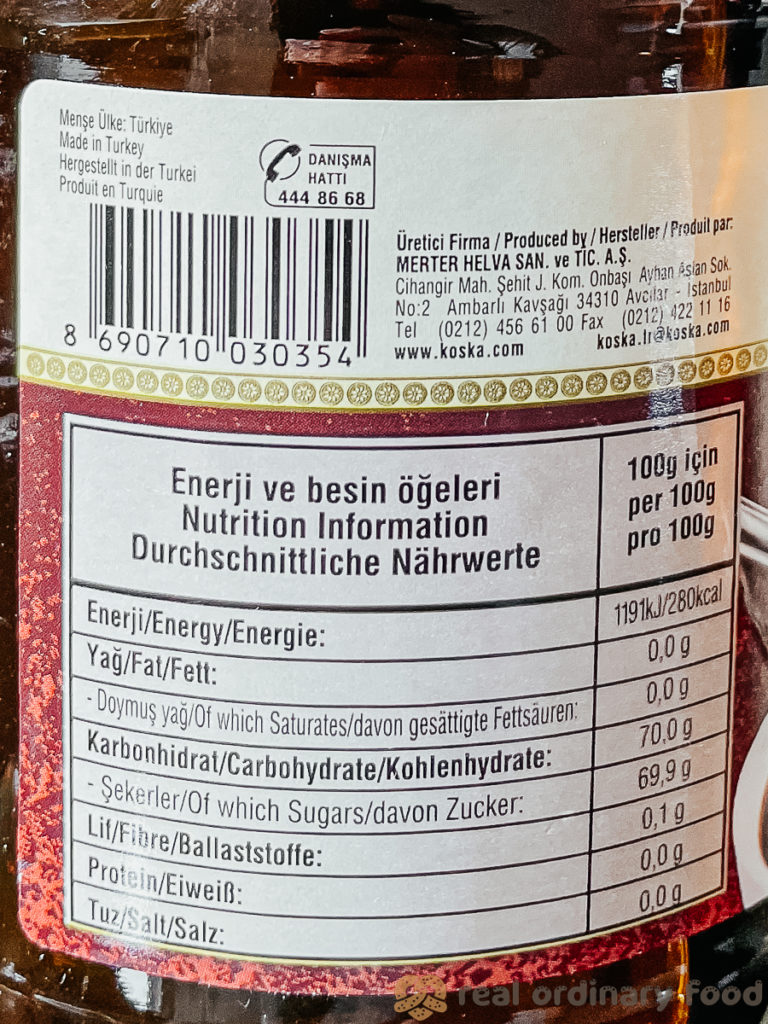
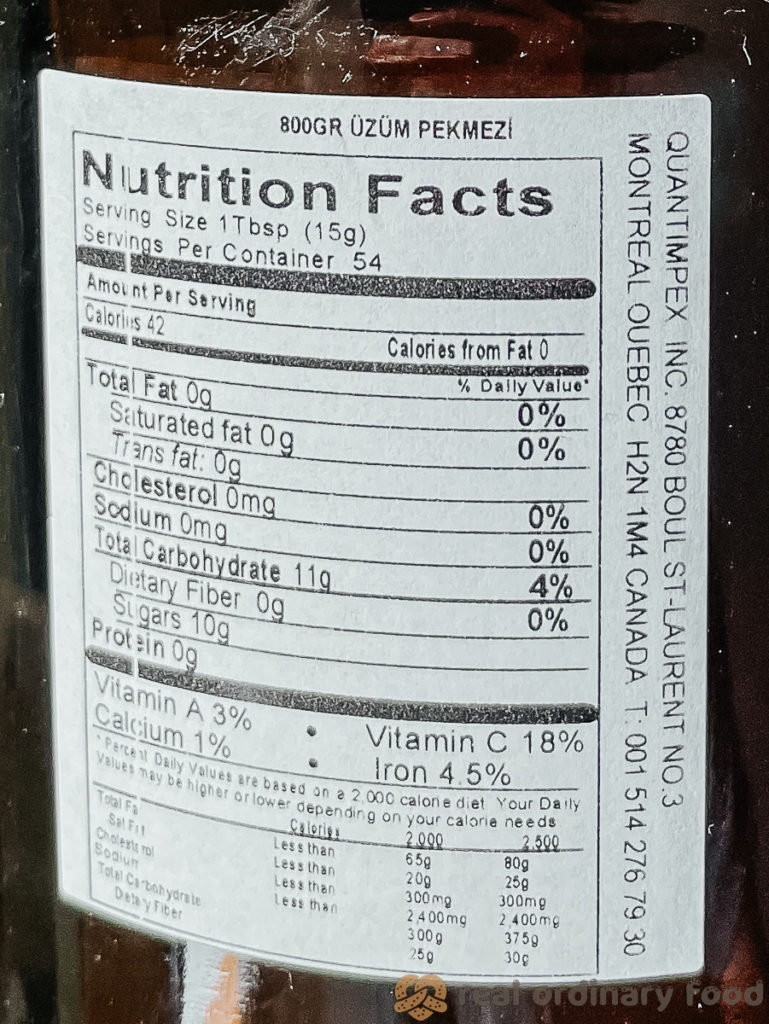
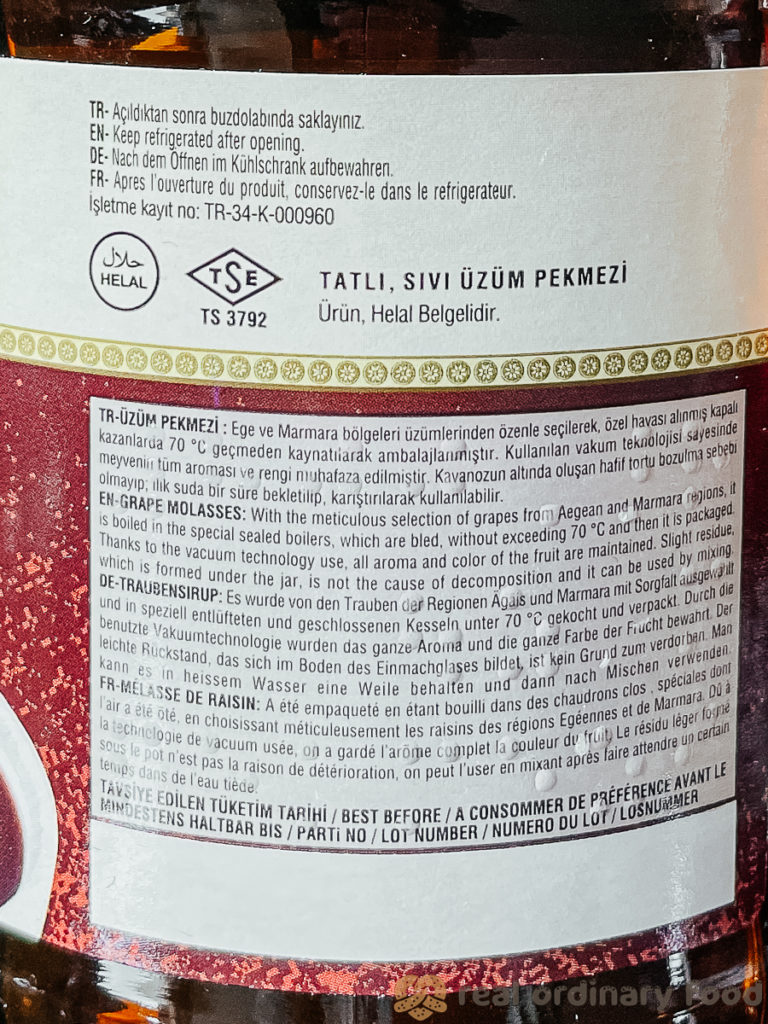
Just like the carob molasses, these grape molasses are very sweet on their own, but a little smoky and medicinal. The flavour is not as strong as the keçiboynuz pekmez was. I recommend mixing it into something like tahini or soy milk, which dilutes some of the overpowering flavour and results in a delicious treat.
Mulberry Molasses (Dut Pekmezi)
Brand: Koska
Price: $10.99 for 800 g
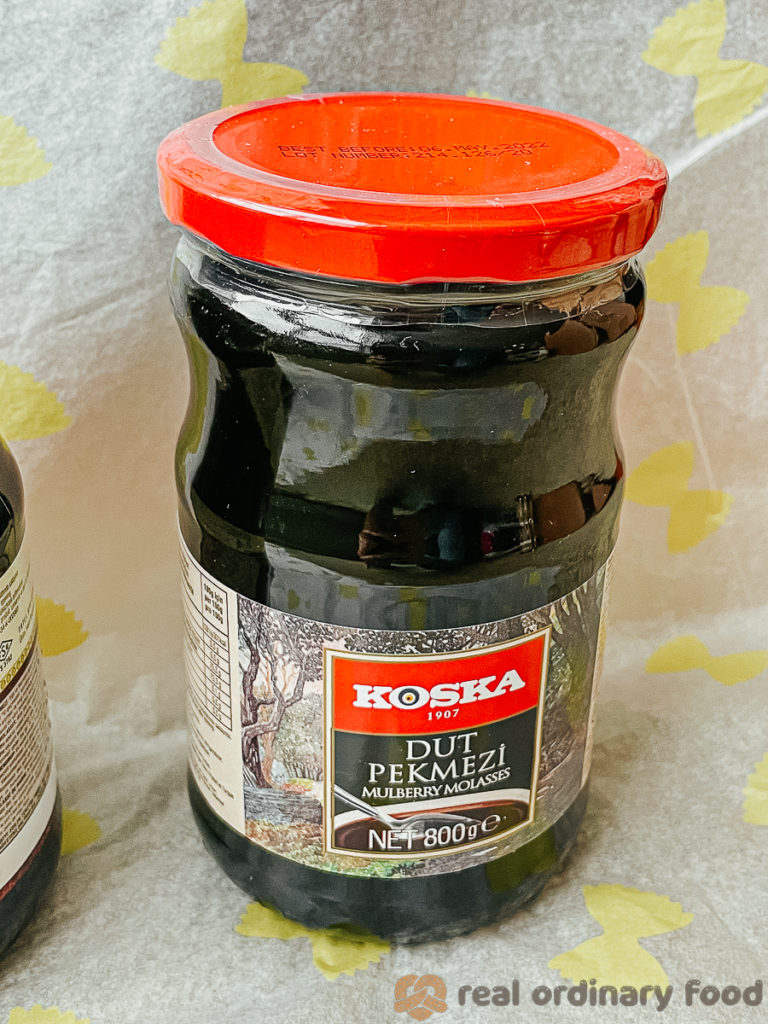
This dut pekmez is unquestionably my favourite syrup out of all the contenders. After the first two, I have to say I did not get my hopes up for tasting this one straight. But it surprised me with how fresh and fruity it tasted. It had none of that dark, medicinal taste and was in fact quite pleasant.
I’ve read that homemade mulberry molasses can have a “bittersweet, slightly burnt flavor,” but although that description well suits the keçiboynuz pekmez and üzüm pekmez I tried earlier, this jar of molasses was much lighter on the palate and not at all bitter or burnt.
You can enjoy mulberry molasses in the same ways as the other pekmez described above. Not only is it a perfect natural sweetener, it’s also wonderful to stir it into yogurt. I had some cultured Cashew Soy Yogurt in the fridge that I thought could use a bit more sweetness. A spoonful of dut pekmezi made it taste so much more decadent.
Pomegranate Molasses (Nar Ekşisi)
Brand: Kemal Kükrer
Price: $7.29 for 250 mL
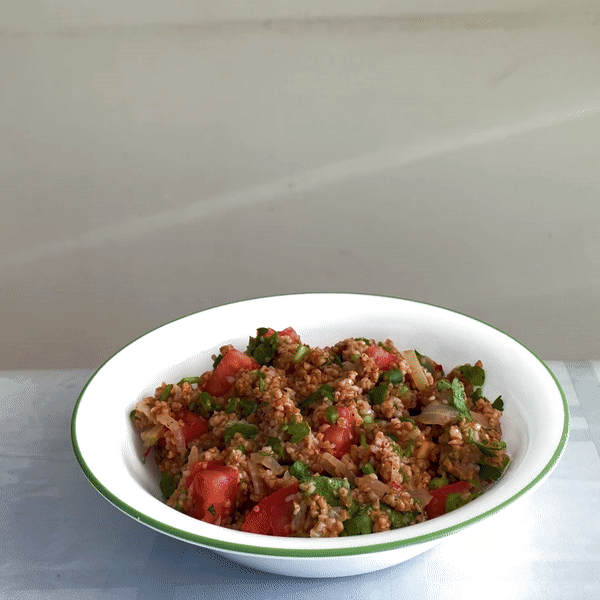
I think this is the most well-known product out of the list, at least from a Western perspective. However, it is also the odd one out in this group, as it is not considered to be in the same category of foods as the others. The fact that its Turkish name, nar ekşisi, does not contain the word “pekmez” hints at a different culinary purpose.
This sauce is also known as narsharab (narşərab) in Azerbaijani and rob e anar in Persian. It is popular in both countries as well as Turkey. The first time I heard of this recipe was in one of Ottolenghi’s recipes a couple of years ago, and I’ve wanted to get my hands on some ever since.
Right off the bat, I noticed the taste of this syrup was very different from the others. It was a lot more acidic, almost astringent, although not without a good dose of sweetness. On some labels you’ll even see nar ekşisi referred to as pomegranate sour, which describes the taste more accurately than calling it molasses.
The taste of pomegranate molasses is commonly likened to balsamic vinegar, which is a fair comparison, but only as far as it adds a sour, slightly-sweet component to food. In a salad or in some other dish, the difference may not be so noticeable, and that’s why you’ll see many recipes permitting balsamic vinegar as a substitute when nar ekşisi isn’t available. But on its own, you would be able to tell the two apart. Pomegranate molasses has a more pleasant, fruity flavour without any of the fermented smell of balsamic vinegar.
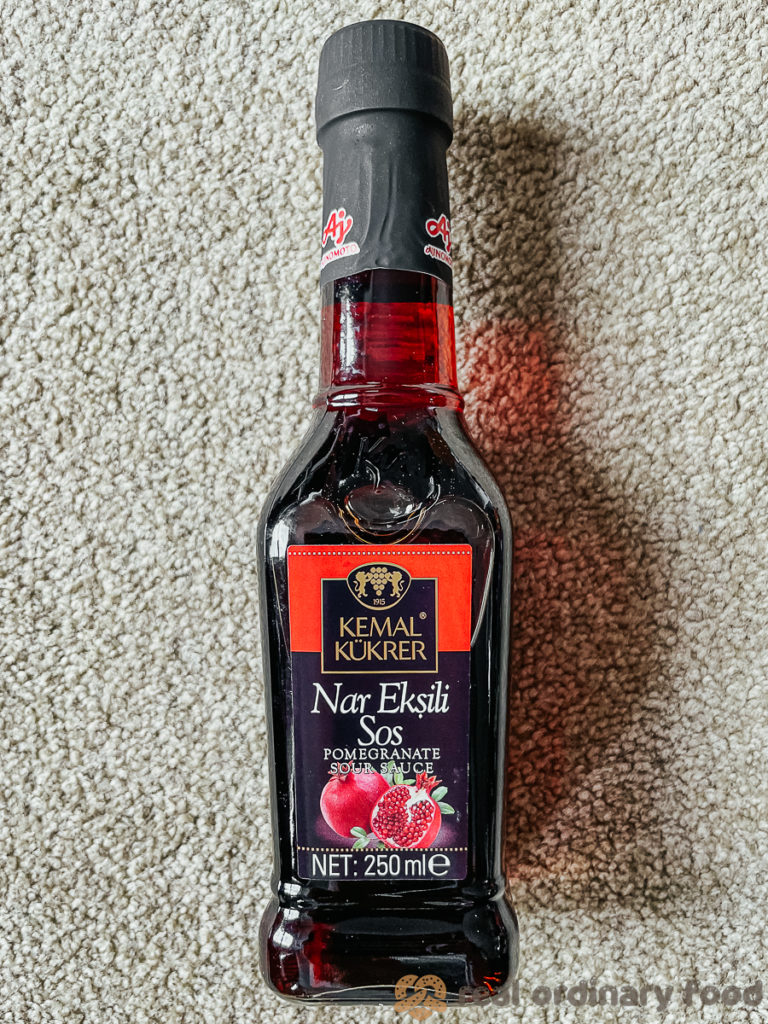
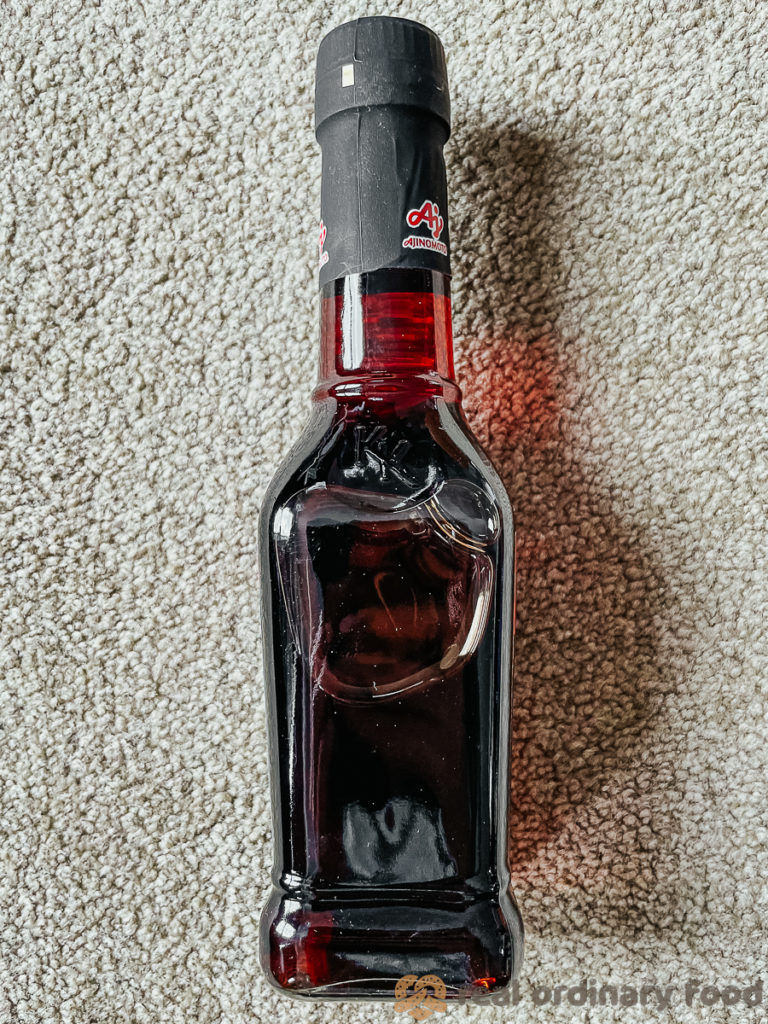
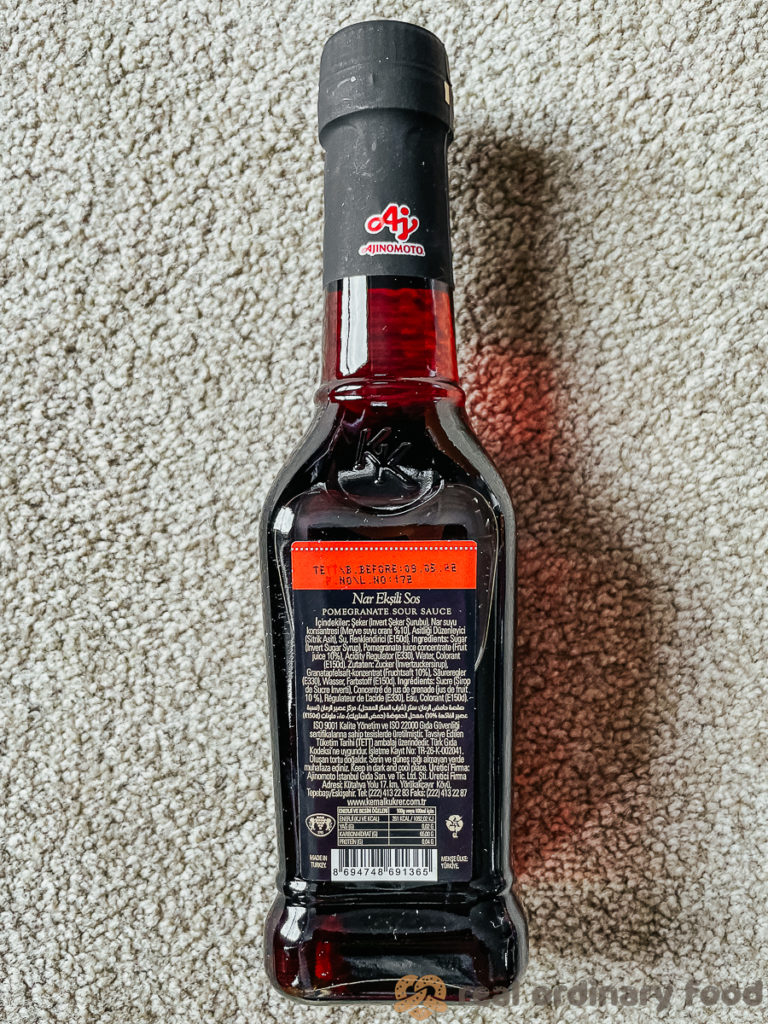
From the price, you can also see that this is the most expensive syrup out of the list. But that is more due to a difference in price between brands. I was able to find a 300 mL bottle of pomegranate molasses sold at my local Superstore for $3.68, which is comparable in price to the other molasses reviewed above. The brand I bought, Kemal Kükrer, is quite a bit pricier, but it’s still not too bad, because a little nar ekşisi goes a long way in the dishes that use it. I also like the fancy little glass bottle that it comes in. Makes my salads feel so gourmet when I drizzle this syrup on top!
Answering your FAQs
The process of making pekmez and molasses is similar: they both involve reducing fruit juice into a sweet, concentrated syrup. However, molasses as we know them in North America comes from sugar beets or sugar cane (the same source of our regular old granulated sugar or brown sugar), while pekmez in Turkey most commonly refers to molasses made from grapes. However, since pekmez can be made with the juice of just about any fruit (including sugar beets!), it’s likely that in Turkey, high-grade “fancy” molasses are seen as an unconventional, but acceptable, variety of pekmez.
In Canada, your best bet for finding pekmez is online. I have seen Al Wadi brand grape molasses at some Loblaws locations, but this is a Lebanese brand rather than the Turkish Koska brand. I have not yet tried this brand (though I plan to—stay tuned) so I’m not sure how it differs from the Turkish version. Furthermore, it seems to be available only at certain Loblaws. If you’re ordering online and want to support a local business over Amazon, I recommend Turkish Bazaar. This is where I purchased all my pekmez from. Are you from a different country? Have you seen pekmez on the shelves of your local store? Please comment so I can update this post for readers outside Canada!
Final Thoughts
I really feel that, with the no-refined-sugar natural-foods-only craze we’re being gripped with here in North America, pekmez should be more popular outside of Turkey. It’s vegan, unlike honey; more sustainable than agave syrup; cheaper than maple syrup; and although the taste is a little strong on its own, it tastes just lovely in every recipe I’ve tried so far. What’s not to like, really?

So far, I’ve come up with a delicious almond flour cookie that uses the flavours of tahini and pekmez. I can’t wait to try some more traditional recipes that include this ingredient. Next on my list is a recipe for simit, which is a traditional Turkish bagel that uses grape molasses for its unique flavour.
Pekmez Appreciation Series
Subscribe to the Real Ordinary Food newsletter to be notified when upcoming pekmez recipes get released.
If you’ve had pekmez before, or have a recipe you want to share, please let me know. I want to hear your thoughts!

Don’t give up on carob pekmez. The one you got looks strange- it should be really dark brown and sweet, not like cough syrup. If you find the right one, it is amazing!! and actually making it from carob pods is not too hard, just time consuming.
I’ll have to try it again then. Any brand you recommend in particular, or do you usually make your own?
You should try date molasses, my personal favourite for mixing with tahini!
I love eating dates by themselves so I’m sure this would become a favourite of mine too!
Calcium carbonate is easy to find. For one, it’s something like 90% of what an egg shell is made of, well washed baked eggshell could probably work. Also it’s the cheapest form of supplemental calcium, probably can find at vitamin shops in bulk without additives. I found some at a pet store as a reptile food supplement when looking for cat food ingredients once.
Thanks for letting me know! That eggshell tip is a great idea for non-vegans. Have you made homemade pekmez before?
That was an interesting read! I would love to read more of these kinds of ingredient focus posts.
Thanks! It was fun trying all the different molasses flavours for this post!
I’ve just eaten some (grape flavour) in Greek yoghurt; it was delicious. First time I used it and was surprised at how runny it was. I saw a recipe where it could be used to drizzle over a sponge cake – a bit like a lemon drizzle cake. I shall try that next.
Yeah, I was surprised by the runniness too. The consistency is closer to a juice concentrate than a syrup! I think using it for a drizzle cake is a yummy idea, I’d love to hear an update on how it goes and which recipe you ended up using.